Cuisinart has a reputation for making some of the most popular and high-quality small kitchen appliances. But sometimes, even the best appliances stop working. In this article, we’ll be talking specifically about a Cuisinart Food Processor. If yours suddenly stops working, we’ve done the research to explain what to do.
There are actually several reasons why your Cuisinart Food Processor may not be working:
- It isn’t plugged in or the outlet is faulty.
- The food processor isn’t assembled correctly.
- The blade is broken or jammed.
- The motor overheated.
- The motor is damaged.
Most of these issues are simple fixes. But if the motor is damaged, it may require a little out-of-pocket money or more work on your part. The purpose of this guide is to help you identify and troubleshoot each of these potential problems so that you can get your food processor up and running again. Continue reading to learn more.
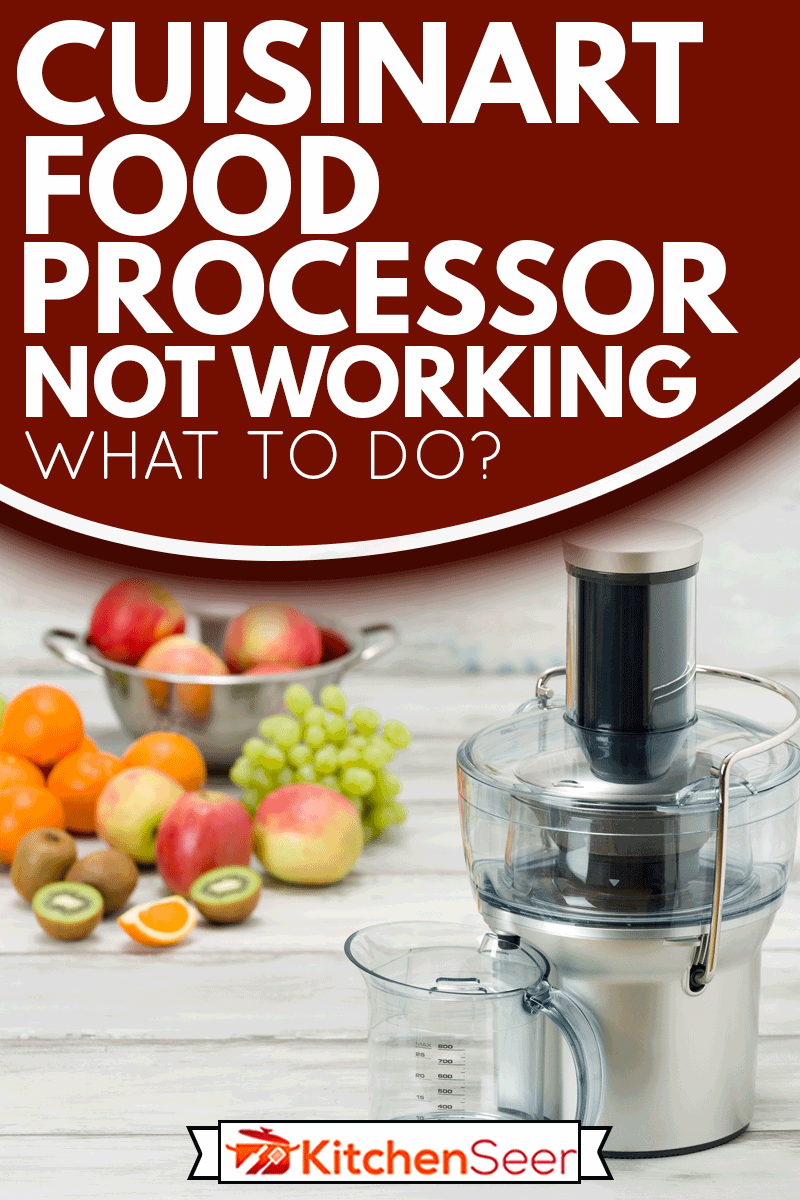
Cuisinart Food Processor Troubleshooting
Obviously, the first step to fixing anything is identifying the source of the problem.
Some of these issues may cause your food processor not to turn on in the first place, while others may cause it to stop working mid-process.
This troubleshooting guide will provide you with a solution for how to fix each of the above-mentioned issues.
Not Plugged In/Faulty Outlet
If your food processor isn’t working, the first thing you should do is make sure that it is plugged in all the way. This may seem simple, but we’ve all thought we plugged something in, and it turns out we haven’t.
If it is plugged in all the way, it could be that the outlet is faulty and not the food processor. Try plugging it into a different outlet to see if it works.
Your Food Processor Isn’t Assembled Correctly
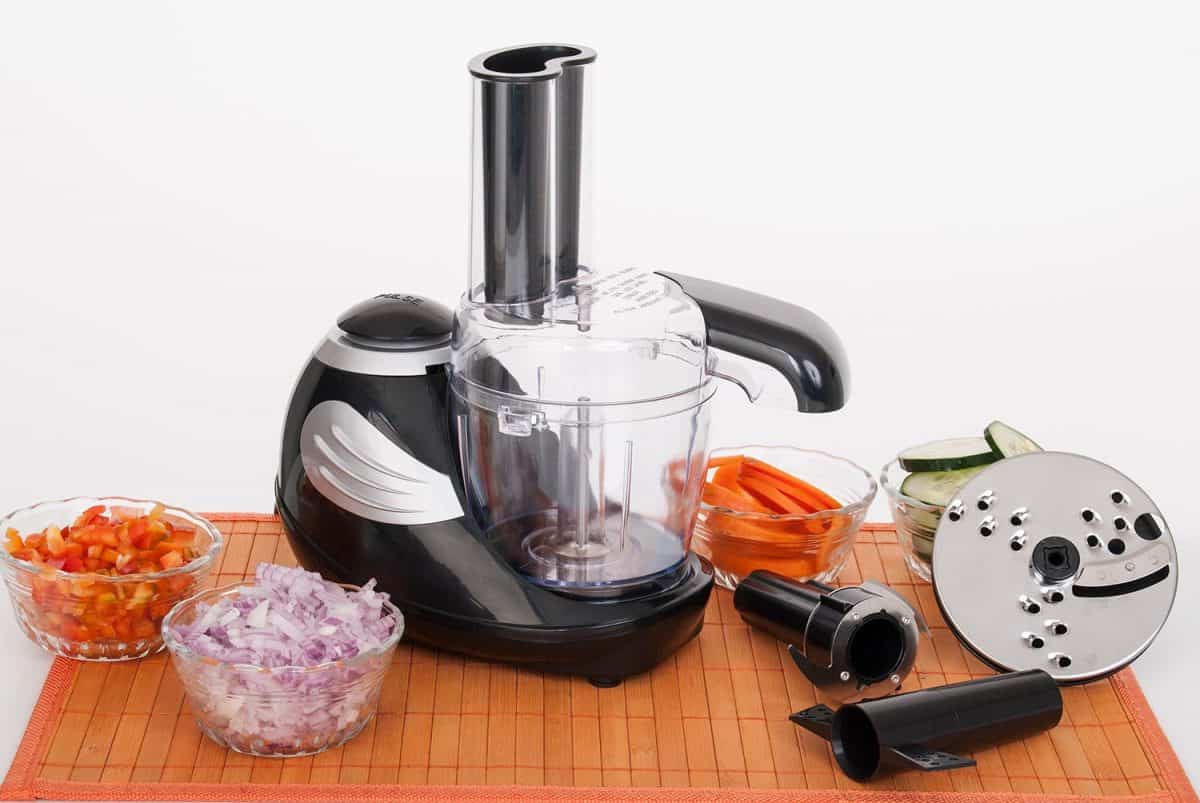
If your food processor isn’t assembled correctly, it likely won’t turn on in the first place, even if it is plugged in. Damage to the machine and injury to yourself could occur if the machine isn’t properly assembled.
It is equipped with a safety mechanism that will cause the machine not to turn on to keep this from happening.
Here’s how to properly assemble it:
- Check to make sure that the bowl is installed so that it is flush with the base of the processor. You should hear a clicking sound when you turn it into place, and the handle on the bowl should be in the front.
- Put the blade into the bowl and make sure that it slides all the way into place.
- Next, place the lid on top of the bowl. It should have a handle, arrows, or other markings to line it up with the bowl so that it fits into place.
- Lastly, make sure that the guard is properly installed. This is the most important piece for your protection, and the processor will not turn on without the guard even if everything else is installed properly,
How Do You Lock The Lid On A Cuisinart Food Processor?
For the food processor to be assembled correctly, then the bowl, lid, and any other parts should line up with each other.
For the lid to line up properly, it needs to be locked into place. Otherwise, your processor may not work.
To lock the lid into place, set it on top of the bowl and turn it. There are grooves on the lid that help it stay in place, so you should hear the lid click into place if it is connected.
See more: What Are The Parts Of A Food Processor? [5 Main Sections]
The Blade Is Broken Or Jammed
If the food processor is assembled correctly and it turns on but doesn’t do anything, something could be wrong with the blade. This is usually the problem if you hear the motor running, but the blade isn’t turning.
What Happens If The Food Processor Blade Does Not Turn But The Motor Runs?
If the motor is running, but the blade isn’t turning, it could be that the blade has become jammed. Usually, this happens if the processor was working correctly but stopped mid-process.
Large pieces of food can get stuck and cause the blade to stop moving. This can be resolved by removing the piece of food.
But as soon as you remove the food, the blade should start turning again if this is indeed the problem. Before attempting to remove it, turn the food processor off and completely unplug it.
You don’t want to have a finger inside of it when the blade starts moving again.
If the blade wasn’t jammed, then it could actually be damaged instead. It could have either come unattached, is cracked, or just be old, depending on how long you’ve had the food processor.
If the blade is damaged, you should be able to purchase a replacement.
Remember to check blade compatibility to ensure it will fit on your Cuisinart model.
Click here to see a replacement blade on Amazon.
The Motor Overheated
Another common cause of the food processor working and then stopping suddenly could be due to the motor overheating.
If that happens, not only will the blades stop spinning, the motor itself will turn off. This is due to a safety feature that prevents the machine from catching on fire.
If you suspect the motor did, in fact, overheat, you will need to let the food processor cool down before you can start using it again.
It’s a good idea to unplug the food processor while it cools down and give it at least an hour before you try to turn it back on.
How Do I Reset My Food Processor?
Before buying a new food processor, one last thing you can try is to reset the food processor. As long as the motor isn’t damaged and there are no other mechanical issues, resetting the machine will likely fix it.
Most Cuisinart food processors have a reset button, so all you have to do is press that button to reset it.
This video demonstrates the reset process for your Cuisinart food processor, after a quick re-check that the assembly is properly aligned:
The Motor Is Damaged
The last cause of your food processor not working could be due to the motor being damaged. If this is the problem, it could be due to one of the following issues.
The Bowl Is Cracked
A cracked bowl can cause damage to the motor over time, especially if you don’t know that the bowl is cracked. Since the bowl is made from plastic, it can become cracked easily when you wash it or store it if it comes into contact with other appliances.
This could cause damage to the motor because it can cause juice and fluids from the food to leak out of the bowl and into the motor.
If you can catch a cracked bowl when it happens, it shouldn’t cause any significant damage. But you will need to buy a replacement bowl.
If you don’t know that the bowl is cracked and it does cause fluids to leak onto the motor, you will likely end up having to replace the whole motor or just buy a new food processor altogether.
There Is Rust On The Food Processor
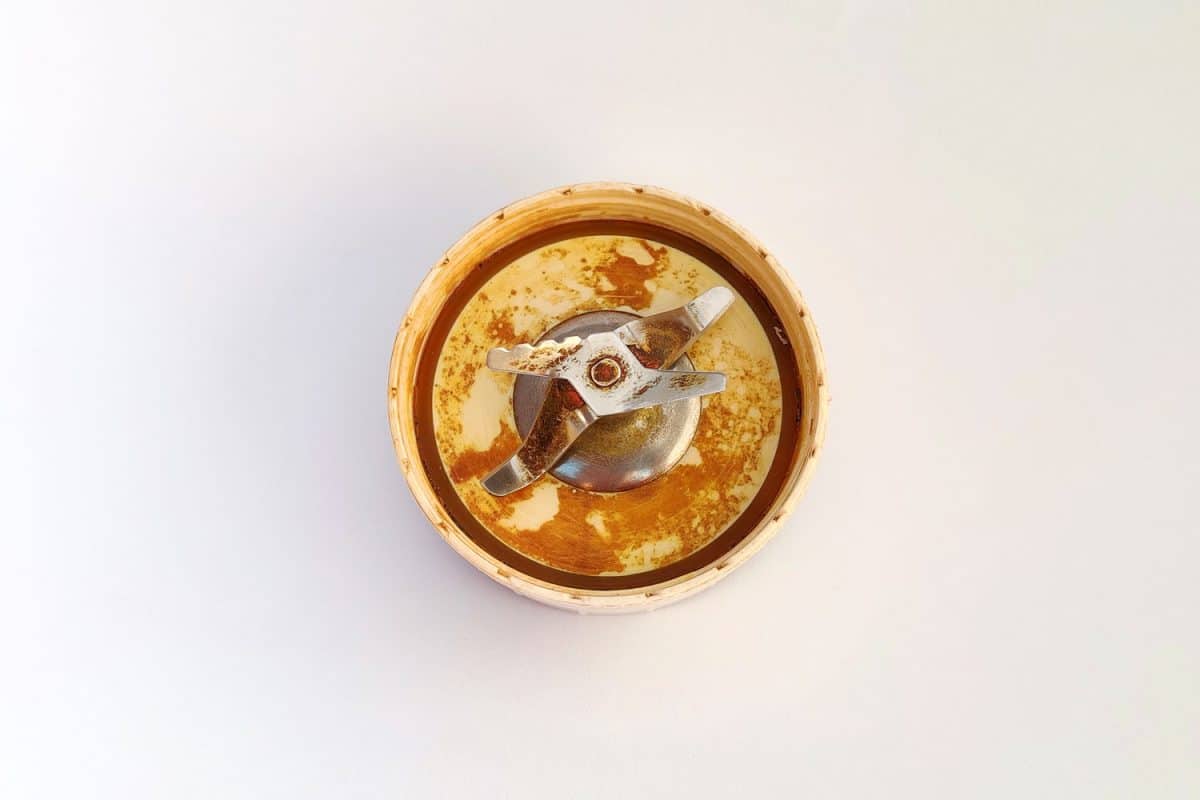
Another cause of a damaged motor could be due to rust on the food processor.
Food processors are made up of some metal parts, including the blade and motor. Rust can be caused by improper or infrequent cleaning.
It isn’t as likely for you to find rust on the motor unless the bowl was cracked or it was stored in an area that gets a lot of moisture. But, it’s not uncommon for the blades to get rusty over time.
This could overwork the motor if the blades can’t function properly.
You can remedy this before it happens by taking the food processor apart and thoroughly cleaning each part. If the blade has rusted, you can soak it in white vinegar to dissolve the rust.
You can also use steel wool to scrape it off. Wash it with dish soap and water afterward, and let it dry thoroughly.
You can also wipe down the motor so that rust doesn’t form. Don’t submerge the motor in water. Instead, use a damp cloth and dish soap to gently wipe it down, then let it dry thoroughly.
If the motor still doesn’t work, you will need to replace it or buy a new food processor.
The Motor Is Old
If you’ve tried everything else on this list, and rust or moisture damage isn’t the cause of the motor not working, it could just be that the motor is old.
No kitchen appliance is going to last forever, and this is likely the cause if you’ve had the food processor for a long time.
You can try to replace the motor. But if the motor is old, then every other part on the machine probably is too.
You’ll end up having to replace them too, if you haven’t already, so you may want to treat yourself to a new food processor instead.
Click here to see this Cuisinart Food Processor on Amazon.
In Closing
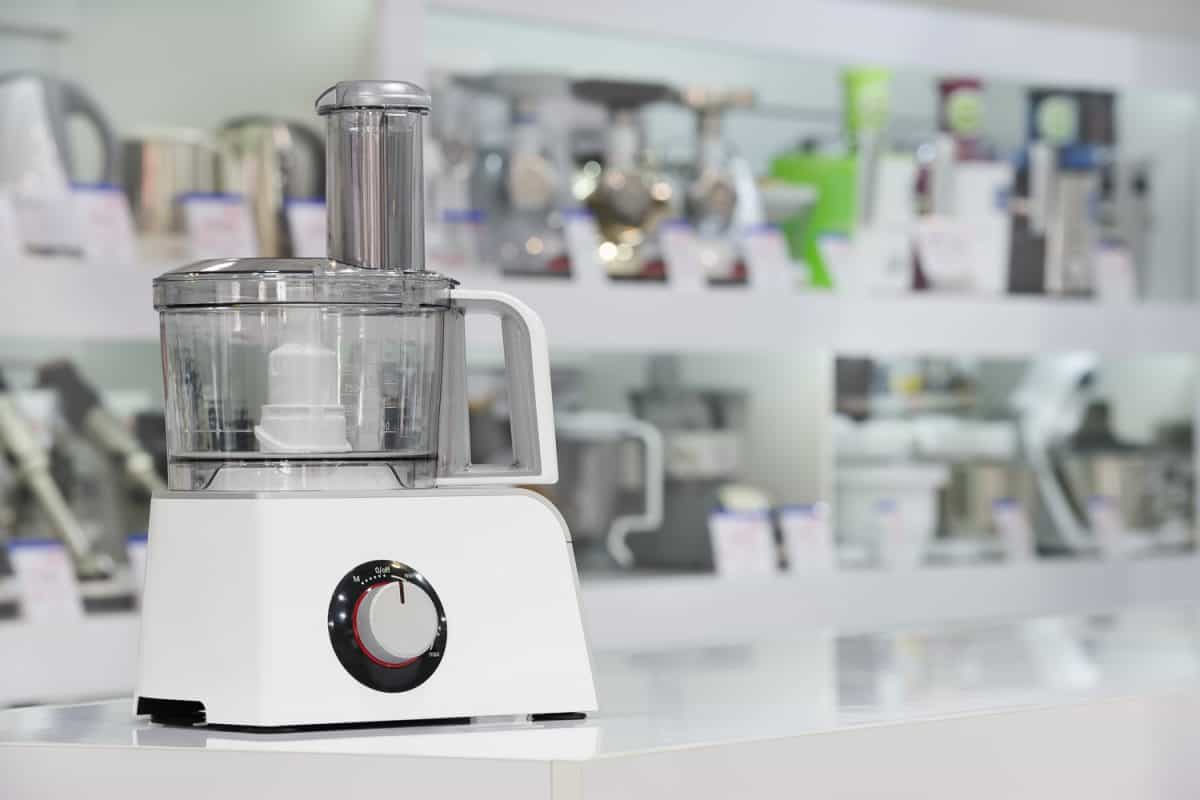
Now that you know how to troubleshoot your Cuisinart food processor, you can get back to food preparation just in time for your next recipe!
If your troubleshooting has determined you're in the market for a new appliance, check out: Food Processor Brands - What Are The Popular Ones?



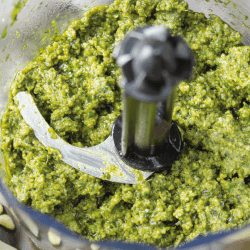
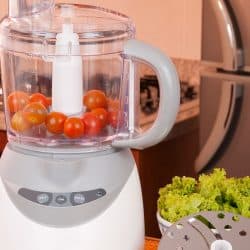
![Natural light. black food processor. Near the nozzle for use. In the background is a kitchen for cooking - How Do I Turn On Kitchenaid Food Processor [Quickly & Easily]](https://kitchenseer.com/wp-content/uploads/2022/10/Natural-light.-black-food-processor.-Near-the-nozzle-for-use.-In-the-background-is-a-kitchen-for-cooking-250x250.jpg)
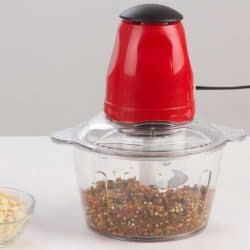
![Food processor blender or coffee grinder blades on wooden table, What Are The Parts Of A Food Processor? [5 Main Sections]](https://kitchenseer.com/wp-content/uploads/2020/10/Food-processor-blender-or-coffee-grinder-blades-on-wooden-table-250x250.jpg)
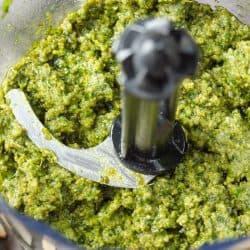
I have a horrible time getting the bowl mounted. There are two wonky pieces of plastic in the back that don’t like going where they need to be to work. It is so bad I wonder if I got a counterfeit. Nothing on the web or booklet speaks to these”tabs”, They look like they are inevitable breakage points and are critical to activating the motor. I have had months now and hardly use because it is such a fight. Model DLC-8S? Pro Custom 11 Food Processor. Do the engineers have a suggestion for a replacement lid??? please?